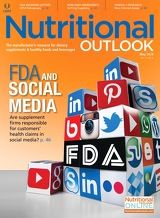Prop 65 Proposal: Listing Specific Chemicals on Warning Labels?
California is mulling changes to Proposition 65, including naming specific toxins on warning labels.

California plans to make big changes to Proposition 65. Prop 65 requires that products sold in California carry a warning label if the product “knowingly and intentionally” exposes consumers to any of the more than 850 Prop 65–listed chemicals “known to cause cancer, birth defects, or reproductive harm.” Until now, companies have been able to rely on using a “safe harbor” warning stating, “This product contains chemicals known to the State of California to cause cancer, birth defects, or other reproductive harm.” But, under newly proposed changes, marketers-including food and dietary supplement firms-must, on a product’s label, instead list the specific Prop 65 chemicals that the product contains.
California’s Office of Environmental Health Hazard Assessment (OEHHA), which implements Prop 65, says the changes are meant to make Prop 65 warnings more specific and useful to the consumer, because:
[C]oncerns have been voiced for many years about the lack of specificity in the current safe harbor warning language, which merely says that an area or a product ‘contains’ a chemical that is known to the State of California to cause cancer, birth defects, or reproductive harm. Members of the public currently have no simple process for obtaining information about the chemical(s) that are present [and] whether or how they are actually being exposed to a significant amount of the chemical [or] the specific toxic hazard.
Naming Specific Chemicals
There are more than 850 chemicals on Prop 65’s list, but only 12 would requiring listing on warning labels:
- Acrylamide
- Arsenic
- Benzene
- Cadmium
- Chlorinated tris
- 1,4-dioxane
- Formaldehyde
- Lead
- Mercury
- Pthalates
- Tobacco smoke
- Toluene
The responsibility to list specific chemicals would fall on the product manufacturer, and not the retailer, OEHHA clarifies. Under the proposed rule, warnings must appear in multiple languages if a company’s labeling and marketing materials are also written in multiple languages.
Warnings should use the 12 chemicals’ general names, instead of their more-technical names. OEHHA says its goal is to keep labels “understandable” for the consumer. If chemical names sound too complex, and if warning labels are “inordinately long and cumbersome,” it would “defeat the purpose of providing understandable and useful information to individuals on the warning itself,” the agency states.
OEHHA “does not anticipate that warnings will contain more than one or two of the listed chemicals” for most products.
“Safe Harbor” Warning Is Not Sufficient
The current “safe harbor” warning-“This product contains chemicals known to the State of California to cause cancer, birth defects, or other reproductive harm”-does not give the public sufficient information on when a given toxin-such as mercury or lead-may be especially harmful to a specific population, such as children and women of childbearing age, OEHHA says.
For foods, OEHHA proposes that warnings be worded as “Consuming [italics added] this product will expose you to [xx] chemical(s).”
“Using this phrase focuses the individual on the route of exposure (oral or ingestion) as opposed to the existing safe harbor language that simply says the product ‘contains’ a listed chemical,” OEHHA says.
More Information on Website
OEHHA also proposes creating a complementary website that would provide consumers with further, detailed information on a product’s Prop 65 contents.
Companies would be required to provide, via the website, a full listing of any additional Prop 65 ingredients in their products, besides the 12 chemicals required on warning labels.
For instance, a company would simply need to list pthalates on its product label, but on the website, it would need to specify whether the pthalate is di(2-ethylhexyl)phthalate, diisononyl phthalate, or di-isodecyl phthalate. Warning statements should include the website’s address so that consumers know where to find the additional information.
Companies would need to publish on the website the following details, among other information:
- The name(s) of the chemicals subject to the warning
- “The anticipated route, routes, and pathways of exposure to the listed chemical”
- The manner in which the chemical is formed, occurs in, or is added to the food
- The primary populations of concern for exposure and “reasonably available information concerning the anticipated level of human exposure to the listed chemical(s), if known”
- Specifically whether a warning is being provided for cancer, birth defects, or “other reproductive harm”
- The specific products or category of products the warning is intended to cover, including barcodes
Companies would need to submit this information online within 30 days. They must also update the information if they make any changes to a product’s contents.
No More “Safe Harbor” Labeling
Many companies today preemptively label their products with the Prop 65 “safe harbor” warning, just to ensure they are “covered” under the law and as a safeguard against the Prop 65 bounty hunter lawsuits flooding the market. They may do this even if they are not sure that their products actually contain the prohibited chemicals or contain the chemicals above threshold levels that would require a Prop 65 warning.
But, under OEHHA’s proposal, companies can no longer preemptively adopt the Prop 65 warning generically; rather, they must determine whether their products truly meet or exceed the statute’s threshold limits, and only then can-and should-they include a warning.
The website’s information would help to substantiate warnings, OEHHA says, and reduce the amount of “over-warning” happening in the market today.
OEHHA...believes that this requirement is needed in order to reduce the number of warnings that are being provided for non-existent exposures or in situations where a chemical could be present, but not at a level that requires a warning. The provision clarifies that a business should have a good-faith belief that a warning is required for a given exposure when it provides a warning, thereby reducing the warnings that are provided where businesses have no reasonable belief that one is required.
An “authorized agent,” such as an industry association, could submit website information on a company’s behalf, OEHHA suggests. “This provision is intended to encourage businesses to coordinate reporting through their trade groups or other organizations since many exposures to listed chemicals occur throughout an industry, not from a single product or occupational or environmental scenario.”
It remains to be seen how this option would work for nutrition companies whose ingredients may be very company-specific.
Less Litigation?
By eliminating vague warnings, the proposed regulations would make companies more secure against Prop 65 litigation, OEHHA implies. The office states, “Since the regulations would create mandatory minimum content for the warnings and also prescribe acceptable warning methods, businesses would be able to rely on their compliance with the regulations…” if faced with a lawsuit.
But not everyone buys this reasoning. “I don’t think that this is going to stem the flow of lawsuits at all,” says Anthony Cortez, an associate at law firm Greenberg Traurig LLP (Sacramento).
“If it were going to stem the flow of lawsuits, then all of the plaintiffs’ bar would be screaming and kicking and yelling and fighting [the proposed changes], but they’re not. They’re supporting it. And there’s a reason they’re supporting it,” he says. “Because whereas before, [companies] could just put a warning on [a product] and not have to say what [a specific chemical is], now it’s actionable. Before, a generic warning would cover you for all chemicals, but now, not only do you have to have a warning; you have to have a warning that’s exactly right.”
On the topic of avoiding lawsuits, OEHHA proposes retaining one change-a bill passed into law in 2013 by California Governor Jerry Brown that gives small companies with fewer than 25 employees a 14-day grace period to correct any infractions before they can be slapped with a lawsuit. But, as some point out, this option is more feasible for entities like restaurants compared to consumer packaged goods companies that may have difficulty relabeling all of their SKUs in such a short time frame.
New Regulations for a New Era
Proposition 65 was passed in 1988. OEHHA says it has since received numerous requests to amend the law and that its intention is also to take advantage of the benefits of technologies, such as the website, that were not prevalent back in 1988.
Above all, OEHHA stresses, its goal is to “provide more meaningful information for individuals in Proposition 65 warnings, facilitate the public’s understanding of these warnings, and make the warnings more consistent.”
OEHHA held a “pre-regulatory workshop” on April 14 in Sacramento, where critics argued that the changes would hurt businesses and fail to help the consumer. (Read expert opinions on the proposed changes, as well as any takeaways from the OEHHA workshop, at www.NutritionalOutlook.com/1406/Prop65.)
This is just a pre-regulatory proposal, and the specifications could further change by the time the proposed regulation is issued, OEHHA reminds critics.
But, says Cortez, “The takeaway from the workshop was that OEHHA is determined to implement the [proposed] regulations by the end of summer, and they are confident they will become law.”
“The proposed regulations may be amended slightly, but they are close to final,” he adds.
Given the amount of feedback it received, OEHHA has extended the comment period to June 13, 2014. The agency says it aims to complete the final regulation by summer 2015.
“I would encourage your readers not to sit by the wayside,” Cortez suggests. “There needs to be some serious response here. The door is not closed to get this shelved. I’d encourage your readers to take action.”
Jennifer Grebow
Editor-in-Chief
Nutritional Outlook magazine jennifer.grebow@ubm.com

HHS announces restructuring plans to consolidate divisions and downsize workforce
Published: March 27th 2025 | Updated: March 27th 2025According to the announcement, the restructuring will save taxpayers $1.8 billion per year by reducing the workforce by 10,000 full-time employees and consolidating the department’s 28 divisions into 15 new divisions.

















